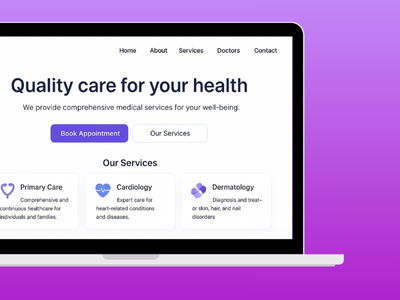Forms
Patient-facing forms
- ADA-aware, multilingual (EN/FR/ES), conditional logic, e-sign
- ID & insurance upload from camera or file
Case Study — Health System Intake Modernization (anonymized sample)
CASE STUDY: HS
 Image slot — Manual process
Image slot — Manual process
A secure, mobile-friendly intake and routing layer the operations team controls—no developer tickets required.
Forms
Eligibility
Scheduling
Referrals
Admin
Compliance
 Image slot — Security
Image slot — Security
 Image slot — KPIs
Image slot — KPIs
 Logo
Logo
Whether you manage clinics, claims, routes, or orders, if your intake is still paper-heavy or spread across portals, we can help you simplify, secure, and measure—using what you already have. DM us or visit envision360.co.